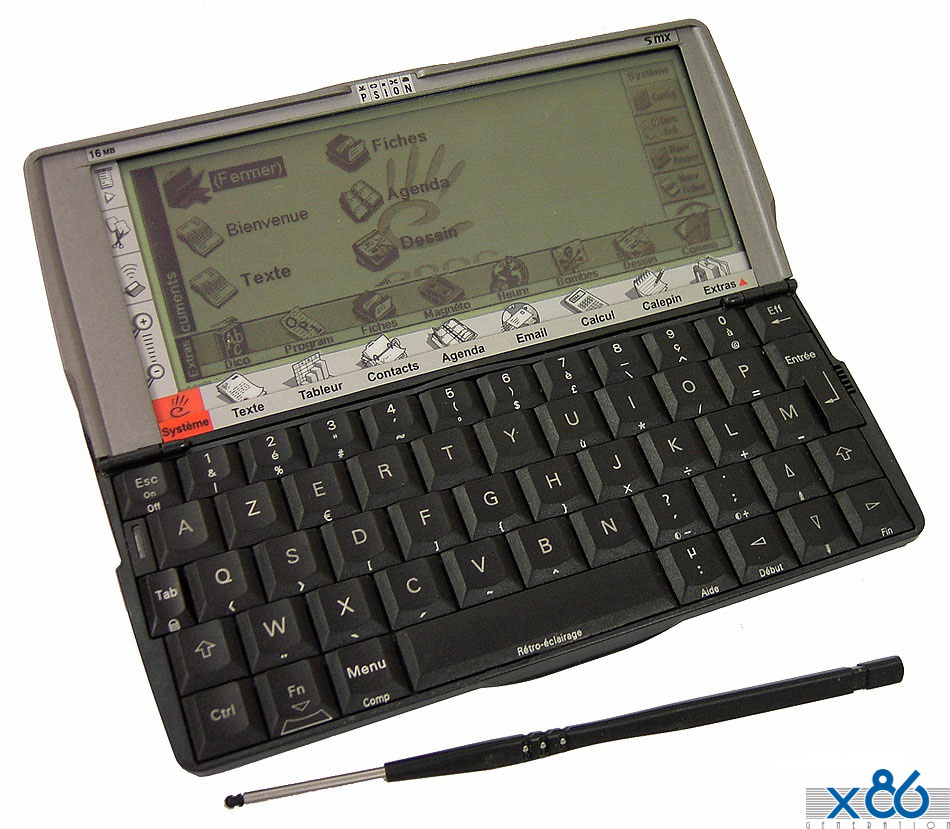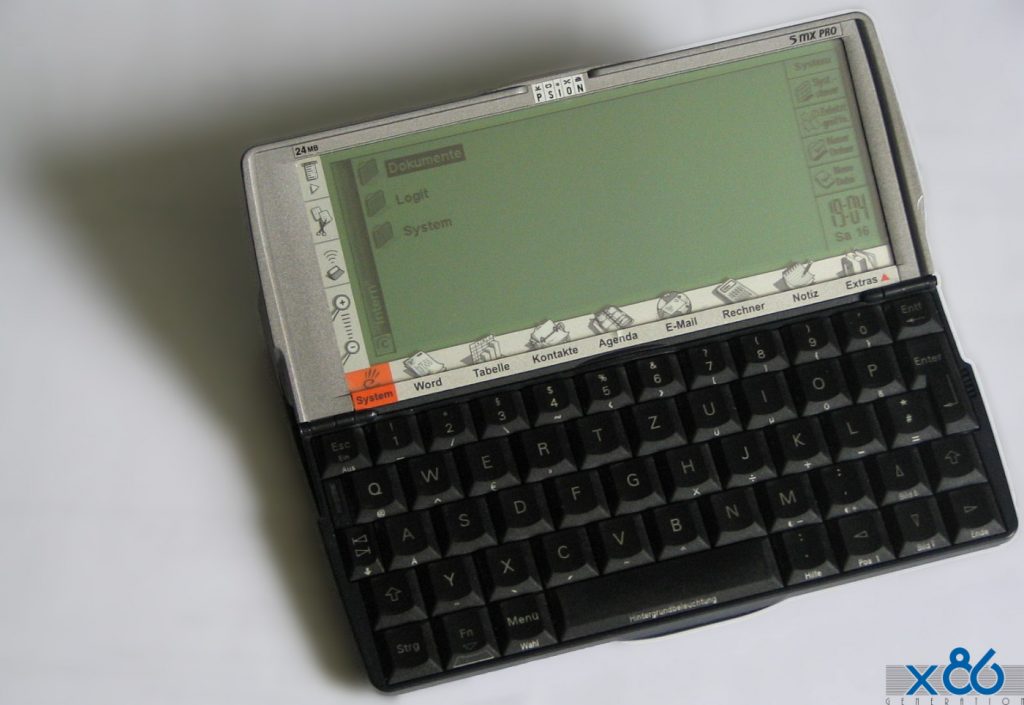YEAR: 1999
Price: $700, $1,093 in 2020
The Psion Series 5 was a Personal digital assistant PDA from Psion. It came in two main variants, the Series 5 (launched in 1997) and the Series 5mx (1999), the latter having a faster processor, clearer screen, and updated software. There was also a rare Series 5mx Pro, which differed only in having the operating system loaded into RAM and hence upgradeable. Ericsson marketed a rebadged version of the Series 5mx called the MC218.
The Series 5 was the first to feature a unique sliding-clamshell design, whereby the keyboard slides forward as the device opens to counterbalance the display, and brace it such that touchscreen actuation does not topple the device, a feature mentioned in the granted European patent EP 0766166B1.[1] This novel design approach was the work of Martin Riddiford, an industrial designer for Therefore Design. A simplified version of this design was also used in the Psion Revo.
The moving parts and hinges can wear out or break. The most serious common problem arose because of a design fault in the screen cable where tooling holes caused unnecessary stressing due to additional bending of the cable at this point each time the Psion Series 5 was opened or closed and eventually leading to failure of the cable, which caused a serious display malfunction and the appearance of horizontal lines on the screen. The screen cable to the Psion Series 5 was more durable than the screen cable of the Psion Series 5mx. There was an after-market cable available for the 5mx which aimed to eliminate this problem.
At its heart was the 32-bit ARM710-based CL-PS7110 processor running at 18 MHz (Series 5) or 36 MHz (5mx), with 4, 8 or 16 MB of RAM. It was powered by two AA batteries, typically giving 10–20 hours of use. The display is a touch-sensitive, backlit half-VGA (640 × 240 pixel) LCD with 16 greyscales. The keyboard, which has a key-pitch of 12.5 mm,[2] is generally considered to be amongst the best for its size, with large-travel keys and touch-type capability. Both RS-232 and infra-red serial connections were provided. A speaker and microphone were also provided, giving dictation as well as music playing ability. External storage was on CompactFlash.
The EPOC operating system, now known as Symbian OS, was built-in, along with applications for word processing, spreadsheets, databases, email, contact and diary management, and software development using Psion’s own OPL language. A Java Virtual Machine, the mobile browser STNC HitchHiker[3] and synchronization software for Windows was bundled with the 5mx as optional installations and, later on, the ‘Executive Edition’ of the 5mx was bundled with various hardware and software extras including version 3.62 of the Opera web browser and a mains adapter. A wealth of third-party software was also available, from games and utilities to navigation, reference, communications, and productivity applications, and standard programming tools like Perl and Python.
An open source project OpenPsion, formerly PsiLinux,[4] supports Linux on the Psion 5mx and other Psion PDAs.
Psion’s experience designing for this form factor and attention to detail made these machines a favourite with power users, many of whom stuck with them, despite their age and the appearance of Symbian OS-powered mobile phones and other PDAs with more impressive specifications.
| Manufacturer | Psion PLC |
|---|---|
| Type | PDA |
| Operating system | EPOC32 |
| CPU | CL-PS7110 @ 18–36 MHz |
| Memory | 4–16 MB |
| Display | 5.6″, 640 × 240, 16 greyscale LCD |
| Input | Keyboard, Touchscreen, Microphone |
| Connectivity | RS-232, infra-red, CompactFlash |
| Power | 2 AA batteries (10–20h use) |
| Dimensions | 170 × 90 × 23 millimetres |
| Weight | 354 grams (battery included) |
More on Facebook.


